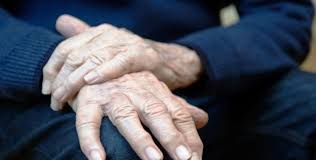Liberty Oxygen
Updated 9:54 AM CDT, Tue June 12, 2018
Published Under: Medical Issues
 Image for Parkinson’s Disease
Image for Parkinson’s Disease
 Liberty Oxygen and Medical Equipment is presenting a series on various conditions individuals may have. These articles will provide some background information for each and help you understand how our oxygen and medical equipment resources may be best suited for you or your senior loved one’s needs.
One of the most well-known early signs of Parkinson’s disease is a slight tremor or shaking in your hand. A slight tremor may be normal if you are feeling stressed or after exercise, but if you’re experiencing this while at rest, this could be an early sign of Parkinson’s. There are other common signs, such as loss of smell, change in handwriting, trouble moving and even issues with sleeping that all point to Parkinson’s. Demonstrating any one of these or other signs alone does not necessarily mean you have Parkinson’s disease, but if you experiencing more than one it may be a good idea to see a physician.
The Mayo Clinic’s website defines Parkinson’s disease as a progressive disorder of the nervous system that affects movement. Often beginning on one side of the body, the symptoms develop gradually and worsen over time as your condition progresses. Although the symptoms and signs will vary from person to person, some common signs may include:
Liberty Oxygen and Medical Equipment is presenting a series on various conditions individuals may have. These articles will provide some background information for each and help you understand how our oxygen and medical equipment resources may be best suited for you or your senior loved one’s needs.
One of the most well-known early signs of Parkinson’s disease is a slight tremor or shaking in your hand. A slight tremor may be normal if you are feeling stressed or after exercise, but if you’re experiencing this while at rest, this could be an early sign of Parkinson’s. There are other common signs, such as loss of smell, change in handwriting, trouble moving and even issues with sleeping that all point to Parkinson’s. Demonstrating any one of these or other signs alone does not necessarily mean you have Parkinson’s disease, but if you experiencing more than one it may be a good idea to see a physician.
The Mayo Clinic’s website defines Parkinson’s disease as a progressive disorder of the nervous system that affects movement. Often beginning on one side of the body, the symptoms develop gradually and worsen over time as your condition progresses. Although the symptoms and signs will vary from person to person, some common signs may include:
- Tremor –a shaking often begins in a hand or fingers.
- Bradykinesia (slowed movement) –over time the disease may reduce the ability to move or slow movement making typically simple tasks more difficult.
- Rigid muscles –muscle stiffness may occur in any part of the body which can cause pain and limit range of motion.
- Speech changes –slurred, hesitated or monotoned inflection are some speech problems that may occur as a result of Parkinson’s.
- Writing changes –writing may become small or become hard to write altogether.
- Loss of automatic movement –decreased ability to perform unconscious movements such as swinging your arms when walking or even blinking.
- Impaired posture and balance –balance issues or stooped posture can result from the disease.
- Exercise
- Medication
- Surgery
- Physical therapy
- Speech therapy
- Occupational therapy

Comments